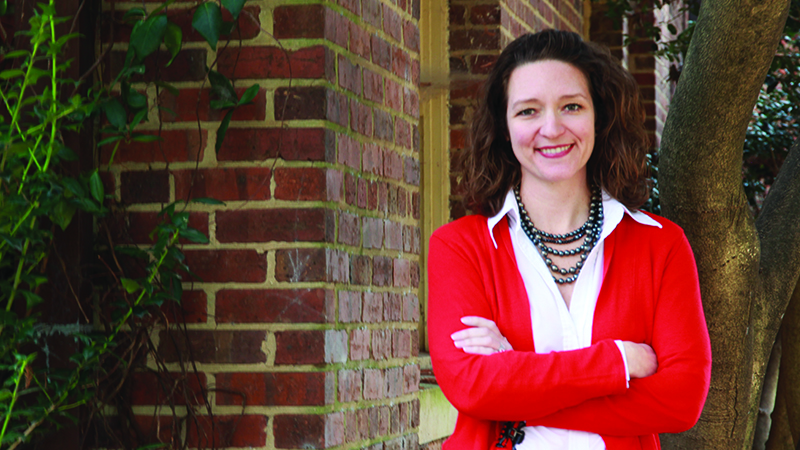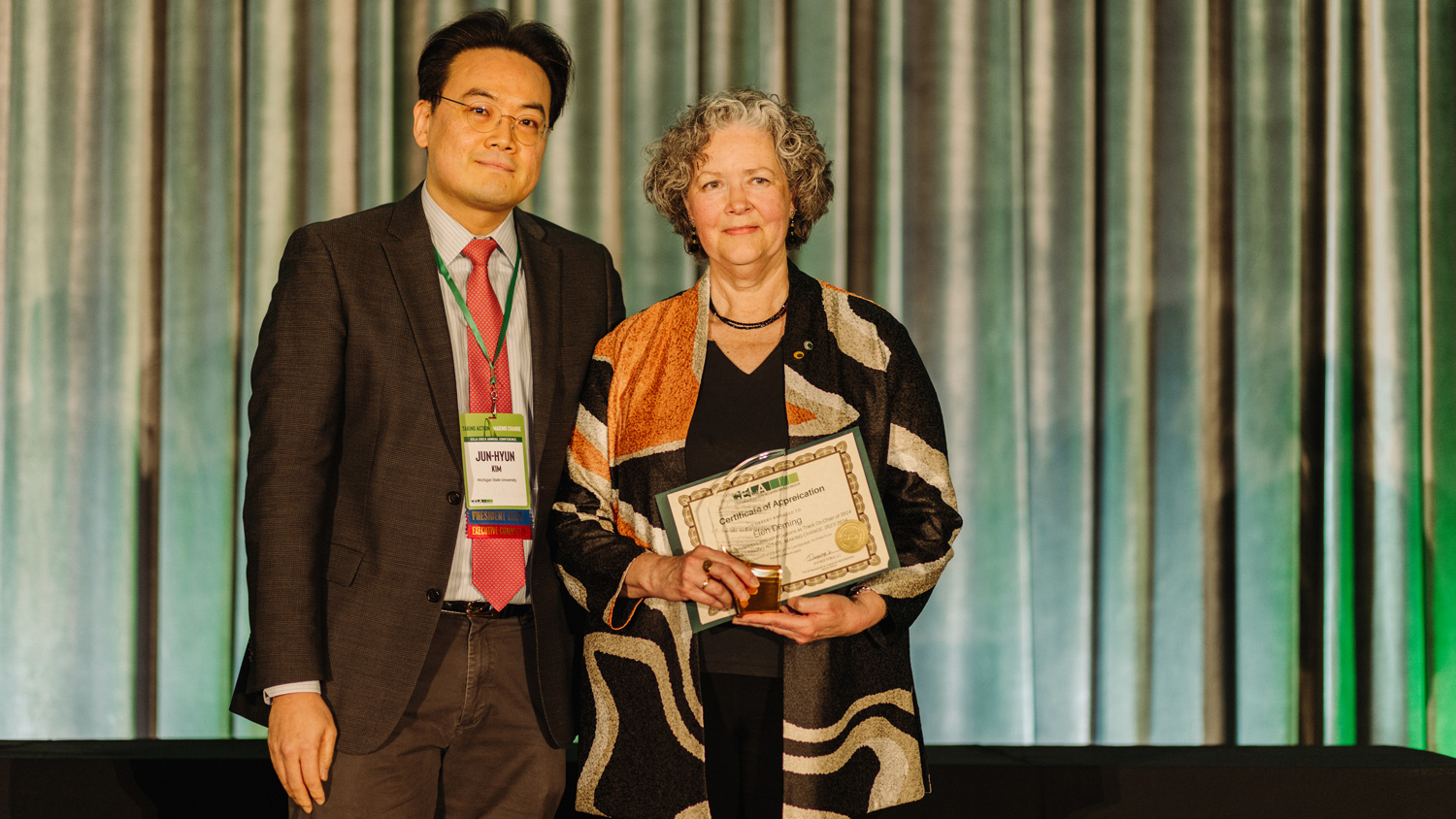Rider Proposal Receives Substantial Grant

New Grants to Engage Businesses for Health
The Robert Wood Johnson Foundation (RWJF) recently awarded eight research studies to build the evidence base for how private-sector investment can help build a Culture of Health—promoting greater well-being and health equity for all. These grants were awarded as a part of the Engaging Businesses for Health project, an RWJF initiative managed by AcademyHealth. Traci Rider, PhD is one of the award recipients.
The funded studies examine the dynamic relationship between the innovation and drive of American businesses and entrepreneurs and the needs and health of the communities that support them. Topics range from how poor health outcomes negatively influence anchor companies to how labeling and incentives can be used to change consumers’ healthy food purchasing behavior. Other studies will provide evidence on the value of employers’ investments in the health and well-being of workers and their communities and inform strategies and best practices for engaging businesses to contribute to building a Culture of Health. AcademyHealth is currently working with the grantees as they conduct their studies and disseminate their findings.
A proposal spearheaded by Dr. Traci Rose Rider to assess and improve health in multifamily housing developments has received a $250,000 grant from the Robert Wood Johnson Foundation (RWJF). The initiative, which began to receive funding on February 1, brings together two of Rider’s passions: architecture and human health.
The Coordinator for the Design Initiative for Sustainability and Health, Research Associate, and Research Assistant Professor of Architecture at NC State, Rider has been interested in the effects of the built environment on human health since receiving her bachelor’s degree in architecture from the University of Cincinnati. “The program had a number of classes that focused on how people use the building, addressing, for example, post-occupancy evaluations, which I feel may be atypical for most architecture programs. When I got out into practice, I noticed that a deeper understanding of users was not often included in the design process,” she says. She decided to return to school for a master’s degree in Human-Environment Relations with a focus on environmental sociology from Cornell University, where she studied “how people psychologically relate to the built environment, often called environmental psychology; how people are impacted by built forms. I also had this interest in sustainability. I feel that the two overlap at personal health: how people can be healthier in buildings, how we can design buildings and the built environment—not just interiors—and communities to be healthier.”
Rider’s proposal acknowledges that most children between the ages of 6 and 11 spend 47.2% of their day at home, and most adults spend 51.3% of their day within 125 meters of home. Aspects of the built environment, such as access to fitness centers and healthy food or exposure to chemicals, impact obesity, cardiovascular disease, diabetes, and cancers. This also holds accountable what goes into products used in the home and workplace, like carpets, adhesives, drywall, and paint stains—which can include chemical substances that may impact health down the line. Rider’s team is working with stakeholder groups including the U.S. Green Building Council, which set forth the LEED (Leadership in Energy and Environmental Design) guidelines, as well as the founders of the WELL Building Standard, a new set of criteria concerning human health and fitness in an environment, and local chapters of the Urban Land Institute, which is primarily comprised of private developers.
One of the biggest hurdles is convincing private, for-profit developers that including design strategies to support human health will prove just as lucrative as the more measurable, more widely considered “green” aspects of sustainability, such as energy and water use and resource consumption. “Private developers have the opportunity to have such a huge impact on how our communities function, but they’re often a challenging lot to get engaged in sustainability just because they’re not set up to function that way. The understanding is that sustainability is about a larger up-front cost with long-term returns on investments. Often, they don’t hold properties long enough to see those returns.”
She points to research on human-environment relations in the workplace as a starting point to get these groups on board with change:
“A lot of literature supports the notion that the biggest cost in a business on an annual basis is people. If you keep the people in your organization healthy and happy, there are less absentee days, there’s higher productivity, there’s better morale, you’re recruiting better people, there’s less turnover, there’s less training for the new people, so it’s better. It’s financially much more efficient. How you transition that into the focus of our grant, which is multifamily housing—you’re not looking for productivity in multifamily housing, but you are looking for consistency and higher rates, etc.”
Her team’s research will target both how and why developers employ community health strategies in new projects and understanding the actual and perceived costs and returns of employing these strategies. The team includes Rider as principal investigator (PI); Dr. J. Aaron Hipp, Associate Professor of Community Health and Sustainability of the College of Natural Resources at NC State, as co-PI; Dr. Stephen Billings, Associate Professor of Real Estate at the University of Colorado at Boulder; and two NC State graduate students. They’re partnering with multifamily development organizations, including Crescent Communities, based in Charlotte, NC, which is engaged in establishing healthy communities in the Southeast.
The first step the team will undertake is to lay out a detailed research plan and pull together their advisory board, including experts from the Green Health Partnership, USGBC, Trulia, and private design practice. This spring and summer they’ll begin gathering data and interviews, especially measuring different public health focus areas, including public transit and walkability, local and healthy food, fitness centers, and greenways and green spaces. Then they’ll interpret the data and interviews for common themes. This, Rider says, will enable them to “create a business case or case study that can suggest or guide or convince other private multifamily developers to start implementing some of these strategies for community health that are more beneficial to the larger community—and start to create, as RWJF put in their call, ‘a culture of health.’”
The group will spread the word in academic and business circles by attending conferences and submitting proposals. The team also has plans for a website and online presentations, and a Huffington Post blogger is on board to cover developments. Despite the complications of the project, Rider is optimistic about the outcomes.
“Health in the built environment is a wicked problem; there are so many pots and branches that we need to be tied in really closely to our partners in public health, and we need to have that expertise from real estate. Nevertheless, we’ve put together a great, well-rounded team that’s really excited about this. We think it’s going to be really fun.”
Julie Steinbacher [MFA ’16] is a transplant from Parkton, Maryland. She writes science fiction, and her story “Chimeras” was a Notable Story in this year’s Best American Science Fiction and Fantasy. She lives and works in Raleigh, NC, as a freelance writer and editor. To read her fiction, visit http://julie-steinbacher.com.
- Categories:



